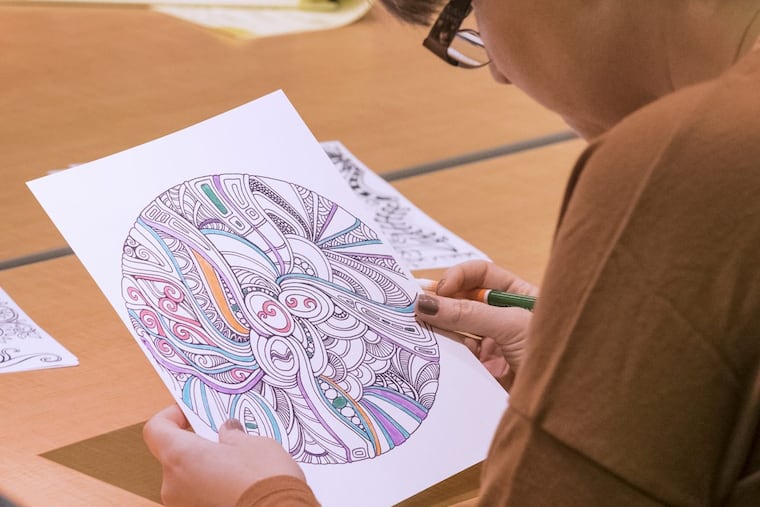What can adult coloring books do for your health?
There are important differences between real art therapy and coloring books that claim to be it.

By 2016, it seemed like I could not give any presentation about art therapy or how the arts impact health without answering a question about adult coloring books.
I would talk about studies in our research lab discussing changes we were seeing in participants' physiological and psychological health as a result of working with art therapists, and, always, someone in the audience would eventually ask me what I thought of coloring books.
In a matter of a few years, coloring books for adults had become a ubiquitous presence in retail outlets worldwide. These products led to an unexpected interest in art therapy when some began calling themselves "art therapy coloring books." That led to some indignation among many art therapists who have typically spent years getting advanced degrees to practice art therapy and felt their field was being simplified to coloring between the lines.
As a researcher, art therapist and lifelong artist, the coloring book phenomenon made me wonder about what visual self-expression means for us as human beings. In my own studies on visual expression I had found that most adults enjoyed the opportunity to draw and create art, but had had very few opportunities for it, especially if they did not perceive themselves as having any artistic skills. Many of them would say that they had not held or used art materials since they were in primary or elementary school.
That blew me away. Why do we, as a society, discourage visual expressive opportunities? Could it be that this is one of the reasons that coloring books have become so popular? Are they providing a way to quietly do something many have felt pressured to abandon?
Part of my job is to conduct research on outcomes of long- and short-term art therapy interventions with a range of subjects. We generate evidence that helps us understand if, why and how visual self expression impacts us.
So in my latest study, my team and I took direct aim at coloring books to see if they actually share any of the same positive effects of genuine art therapy.
We examined what happened when study participants did coloring alone and when they created art with an art therapist there to assist them. In the study, we were surprised to find that most people enjoyed the coloring experience, found it helped pass time quickly, and sometimes attributed meaning to their color choices and the associations to the final image. For example, one person associated the image to stained glass windows and went on to talk about a very specific spiritual experience.
But the art therapist-assisted "open studio" sessions yielded more expressive possibilities, as well as opportunities to process the experience and derive meaning and accomplishment. Participants in the open studio group created images referencing a memorable experience, or used their struggles and memories around shaming comments that made them stop drawing altogether as a young child.
In the end, there are important differences between real art therapy and coloring books that claim to be it. Coloring books seemed to reduce stress and negative feelings. But, as we expected, coloring didn't result in changes in the participants' sense of self or generate positive or creative feelings — all of things the art therapist-assisted session did.
And I finally have some definite answers if someone asks me what I think of coloring books: Try them out. They might momentarily help alleviate stress and make time fly. But if you want to better understand yourself and invest in personal development, actual art therapy is what you're looking for.
Girija Kaimal is an assistant professor in the department of creative arts therapies at Drexel University.